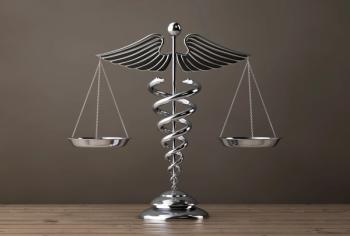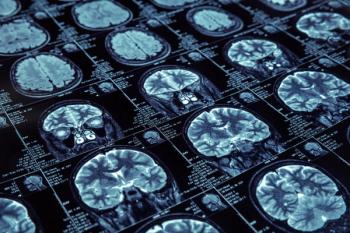
- June 2012
- Volume 16
- Issue 1
Empowering Patients to Combat Obesity
There is no magic tool or quick fix to achieve successful and effective weight loss. The first step and best line of defense in weight loss management is patient motivation and commitment. Pharmacists are likely to encounter patients struggling with weight issues and should be prepared to counsel patients on effective weight loss strategies.
During counseling, pharmacists should seize every possible opportunity to educate patients about the alarming overweight and obesity statistics in the United States. They should also show empathy and encourage patients embarking upon weight loss management plans by providing them with key strategies for effective weight loss.
In addition, through patient education, pharmacists can increase awareness about the health complications associated with being overweight or obese. Educating patients about the increased morbidity and mortality associated with higher body weights may be an impetus to get some patients motivated to set goals to achieve and maintain healthy body weights.1
According to the National Institutes of Health (NIH), overweight and obesity is the second-leading cause of preventable death in the United States.2 Over the past 3 decades, the rate, of obesity has escalated at alarming rates with significant increases among the pediatric population. Statistics from the Centers for Disease Control and Prevention (CDC) show that more than 33% of adults in the United States and 17% of children are obese.3 The percentage of Americans who are obese (with a body mass index [BMI] of 30 or higher) has tripled since 1960. 3,4
Furthermore, the CDC estimates a 20% obesity rate in the 50 states, with 12 states having rates of over 30%.3 Results from a study published in the January 2012 issue of the Journal of Health Economics report that obesity accounts for an estimated 21% of health care spending in the United States, which is more than double what previous estimates reported.5,6
Etiology of Obesity
Genetic, environmental, behavioral, and socioeconomic factors have all been identified as contributing factors to being overweight or obese.7,8 Recent studies have also implicated shorter sleep durations and poor sleep habits as possible causes of weight gain. 8-10 Results from another study suggest the association between inadequate sleep and higher BMI is stronger in children and adolescents. 10 Certain pharmacologic agents can also contribute to weight gain.8
Defining the Problem
According to the World Health Organization (WHO), overweight and obesity are defined as abnormal or excessive fat accumulation that may cause health problems.12
Although calculating BMI is a commonly used strategy, results from a recent study suggest that the obesity epidemic may actually be worse than what the statistics report because of the limitations of using BMI alone.13 The study used BMI and 2 other measures, including dual energy x-ray absorptiometry (DXA)—which tests body fat, muscle mass, and bone density—and measurements of leptin, a protein that regulates metabolism.13
According to study results, 39% of test subjects were misclassified as nonobese according to their BMI, but were considered obese when their body fat was measured directly using a DXA test.13 Additionally, 48% of women were misclassified as nonobese by BMI, but found to be obese by percent body fat.13 In addition, 25% of men were misclassified as obese by BMI, but were nonobese by percent body fat.13 The study concluded that BMI significantly underestimates prevalence of obesity when compared with DXA direct measurement of percent body fat.13
WHO, CDC, and NIH report that BMI is a relatively good indicator of obesity, but does have limitations and should be considered a rough guide.12,13 Patients should be encouraged to discuss their weight issues with their primary health care provider.13
Health Complications
According to the CDC, research studies have demonstrated that being overweight or obese increases various morbidities. According to the WHO, 44% of diabetes cases, 23% of ischemic heart disease cases, and between 7% and 41% of certain cancer cases are attributable to overweight and obesity. 8,14,15 Table 1 lists additional health problems associated with overweight and obesity.
Treatment Options
Although there is no 1 best treatment for overweight and obese patients, there are several possible treatment options. Effective therapy typically involves a multi-therapy approach, which can include a combination of diet, exercise, behavior modification, and sometimes weight-loss drugs.8
Lifestyle changes, modifications in diet, and increased exercise are considered to be the cornerstones of weight loss and management.10 Patients hoping to lose weight may try various dietary modifications including caloric restriction, altering proportions of certain foods (eg, low fat or low carb diet plans), meal replacement therapy, or structured commercial weight-loss programs.8 In some cases of extreme obesity, pharmacologic therapy or bariatric surgery may be recommended.8,15,16
Counseling Patients
Patients should always be reminded that there is no quick route to weight loss and that a reasonable goal for most overweight and obese patients is 10% over a period of 6 months or 1 to 2 lb per week.8
Patients should set realistic goals and understand that successful and effective weight loss requires a commitment to adhering to a healthy balanced diet and routine exercise plan.
Pharmacologic therapy or consideration for bariatric therapy may be a feasible option for those patients with significant obesity or those who fail to lose weight through lifestyle modifications.8 Patients should be advised that nutritional and herbal supplements marketed for weight loss are not approved by the FDA and should discuss the use of these products with the primary health care provider. Patients electing to use dietary or herbal supplements should be aware of possible adverse effects and drug—supplement interactions as well as contraindications.
Currently, WHO and the CDC promote various measures that may help individuals achieve successful weight loss and maintain healthy weights, which include 12,16 :
- Increase consumption of fruits, vegetables, and whole grains
- Engage in regular exercise routine
- Decrease consumption of sugared drinks and high-energy-dense foods, which are high in calories
- Decrease consumption of foods high in saturated fat
- Maintain a healthy calorie-controlled diet
- Track progress and set realistic goals
Through adherence to a safe and effective weight loss program including healthy eating and exercise, patients can achieve optimal results and reach healthy weight goals.
Additional resources can be found in Table 2. Let’s encourage patients to take control of their health.
Ms. Terrie is a clinical pharmacy writer based in Haymarket, Virginia
References
1. National Institutes of Health Clinical Guidelines on the Identification, Evaluation and Treatment of Overweight and Obesity in Adults. The Evidence Report. National Institutes of Health website http://www.nhlbi.nih.gov/guidelines/obesity/ob_gdlns.pdf Accessed April 25, 2012
2. Clinical Guidelines on the Identification, Evaluation, and Treatment of Overweight and Obesity in Adults--Executive Summary. NIH website. http://www.nhlbi.nih.gov/guidelines/obesity/sum_intr.htm Accessed April 24, 2012
3. Obesity and Overweight Facts. Centers for Disease Control website. http://www.cdc.gov/obesity/data/adult.html Accessed April 24, 2012
4. As America’s waistline expands, costs soar. Thomson Reuters website http://www.reuters.com/article/2012/04/30/us-obesity-idUSBRE83T0C820120430) Accessed April 25, 2012
5. Obesity accounts for 21 percent of U.S. health care costs. Cornell University Chronicle Online.http://www.news.cornell.edu/stories/April12/ObesityCosts.html Accessed April 24, 2012
6. John Cawley, Chad Meyerhoefer. The medical care costs of obesity: An instrumental variables approach. Journal of Health Economics, 2012; 31 (1): 219
7. Overweight and Obesity. NIH Weight —control Information Network website. http://win.niddk.nih.gov/statistics/index.htm Accessed April 25, 2012
8. . Miller, S., Bartels C. Overweight and Obesity. In: Krinsky D. Berardi R, Ferreri S. et al, eds. Handbook of Nonprescription Drugs 17th ed. Washington, DC: American Pharmacists Association; 2012
9. Christian Benedict et. Acute Sleep Deprivation Enhances the Brain's Response to Hedonic Food Stimuli: An fMRI Study. The Journal of Clinical Endocrinology & Metabolism, 2012;
10. Kristen L. Knutson. Does inadequate sleep play a role in vulnerability to obesity? American Journal of Human Biology, 2012; 24 (3): 361
11. Hamdy O. et al Obesity. Medscape website. http://emedicine.medscape.com/article/123702-overview Accessed April 25, 2012
12. Overweight and obesity. World Health Organization website. http://www.who.int/mediacentre/factsheets/fs311/en/ Accessed April 25, 2012
13. Shah NR, Braverman ER. Measuring Adiposity in Patients: The Utility of Body Mass Index (BMI), Percent Body Fat and Leptin. PLoS One. 2012;7(4):e33308.R Pub Med Central website http://www.ncbi.nlm.nih.gov/pmc/articles/PMC3317663/?tool=pubmed Accessed April 24, 2012
14. The Health Effects of Overweight and Obesity. Centers for Disease Control website. http://www.cdc.gov/healthyweight/effects/index.html Accessed April 25, 2012
15. Halting the Epidemic by Making Health Easier at a Glance 2011. Centers for Disease Control website http://www.cdc.gov/chronicdisease/resources/publications/aag/obesity.htm Accessed April 26, 2012
16. Strategic Plan for NIH Obesity Research. U.S. Department of Health and Human Services, National Institutes of Health. August 2004. NIH Publication No. 04—5493.
Articles in this issue
over 13 years ago
Cortisone, Acne Products, Sunscreen Most Popular OTC Topicalsover 13 years ago
Allergy Treatments for All Symptomsover 13 years ago
The Common Cold: Tips for Avoidance and Reliefover 13 years ago
OTC Case Studies: Guiding Patients in Self-Careover 13 years ago
2011-2012: The Medical Year in Reviewover 13 years ago
Evaluating the Interaction Risk of Herbal Supplementsover 13 years ago
Promoting the Proper Use of Emergency Contraceptionover 13 years ago
Mitigating the Pain of Migrainesover 13 years ago
Aspirin Therapy Adherence Low Among Womenover 13 years ago
Fewer Amputations as Diabetes Management ImprovesNewsletter
Stay informed on drug updates, treatment guidelines, and pharmacy practice trends—subscribe to Pharmacy Times for weekly clinical insights.

















































































































































































































